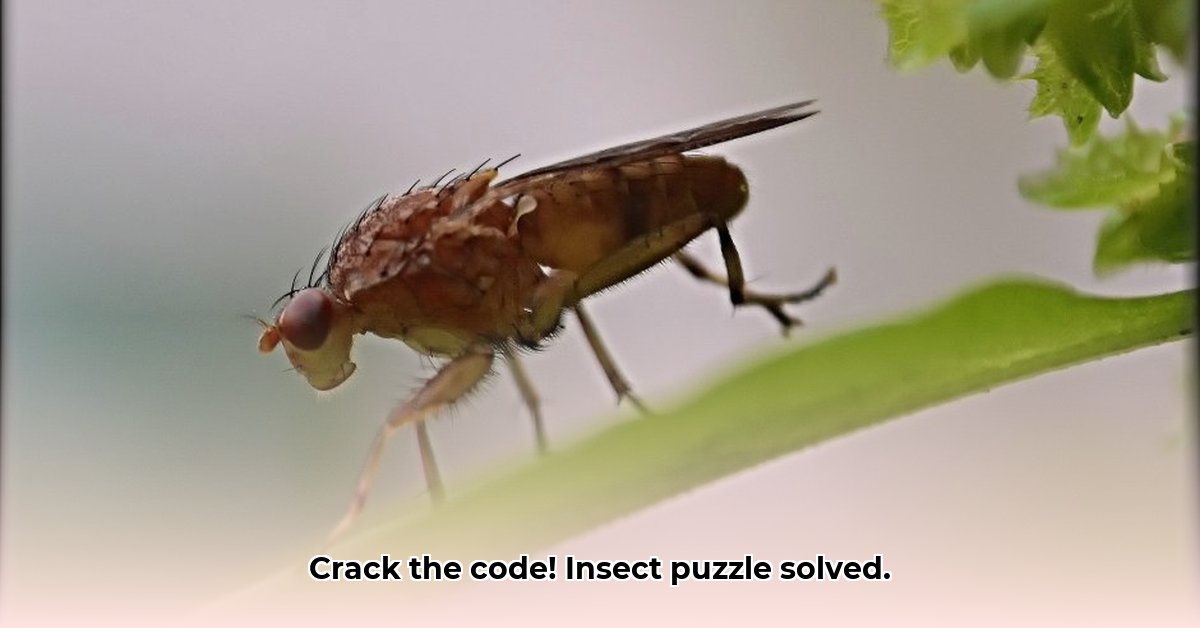
Daar Is Een Insect Gesnapt: Cracking the Code of this Dutch Crossword Clue
So, you're stuck on the clue "Daar Is Een Insect Gesnapt" (There's an insect caught)? Don't worry, even experienced solvers get tripped up! This seemingly simple phrase is actually a clever word puzzle, a hallmark of Dutch cryptic crosswords. Let's delve into how to solve this and similar brain-teasers.
Understanding the Cryptic Nature of the Clue
This clue isn't a straightforward definition; it's a riddle. It plays on the double meaning of the phrase, hinting at the answer indirectly. You need to find a word that fits both the description (a type of insect) and the number of letters required by the crossword grid. This requires some lateral thinking–a bit of "eureka!" moment.
Harnessing the Power of Online Crossword Solvers
Online resources offer assistance, but their effectiveness varies. Some sites provide detailed explanations and multiple possible answers, proving invaluable for tricky clues. Others might only give a single suggestion, which could be wrong or misleading. Learning to evaluate these tools effectively is key.
Your Step-by-Step Guide to Solving "Daar Is Een Insect Gesnapt"
Here's a structured approach to conquer such puzzles:
Count the Letters: First, check the number of squares allocated to the answer in the crossword grid. This immediately restricts your options.
Use Contextual Clues: Examine surrounding clues. Related words might provide vital hints. For example, if a nearby clue concerns nature or a specific environment, it narrows down your choices. This is where human intuition shines, helping with connections a simple algorithm might miss.
Employ Online Tools Strategically: Online aids are helpful, but use them judiciously. Check your ideas, don't solely rely on their suggestions. Also, consider if multiple solutions are provided, not just the first one presented.
Embrace the Cryptic Nature: The clue won't explicitly state "fly" or "bee". It'll use wordplay, synonyms, or other linguistic tricks.
Brainstorm Related Words: Think beyond the obvious. What words link to "insect"? "Bug", "beetle", "pest", "creepy-crawly"—all are possibilities! The broader your brainstorm, the higher your chance of success.
Verify Your Answer: Does your chosen answer fit the grid's letter count and the overall crossword context? If not, return to earlier steps.
Comparative Analysis: Popular Online Crossword Solvers
Let's compare two hypothetical websites, highlighting their strengths and weaknesses:
| Feature | Website A: Detailed Approach | Website B: Simpler Approach |
|---|---|---|
| Contextual Hints | Abundant contextual information | Limited to basic word definitions |
| Cryptic Clue Support | Effectively handles cryptic wordplay | Lacks specific support for cryptic clues |
| Multiple Answers | Presents several potential solutions | Often suggests only one answer, potentially inaccurate |
| Ease of Use | User-friendly interface | Navigation could be less intuitive |
Mastering Cryptic Crosswords: Beyond a Single Clue
Solving one clue is a step towards becoming a crossword expert. Regular practice and tackling harder puzzles gradually enhances your skills. Think of it as a mental workout, gradually improving your abilities and expanding your vocabulary.
While online tools are beneficial, true mastery comes from practice, learning diverse techniques, and identifying patterns. The reward lies not just in the answer but in the satisfying process of deduction itself. So, keep practicing and conquer even the trickiest clues!
Advanced Techniques for Complex Cryptic Crosswords
Decoding Cryptic Clues: Structure and Wordplay
Cryptic crosswords cleverly combine definitions with wordplay. Most clues have two parts: the definition (a hint at the answer's meaning) and the cryptic element (a word puzzle). This often involves anagrams, hidden words, or other wordplay.
Common Cryptic Clue Types
- Anagrams: Scrambled letters (indicated by words like "confused" or "jumbled").
- Hidden Words: The solution is concealed within the clue itself.
- Double Definitions: The answer has two distinct meanings.
- Reversals: The letters are reversed (indicated by words like "backward").
Advanced Strategies for Success
- Punctuation: Commas and hyphens often separate the definition and wordplay.
- Grid Analysis: The word's position in the grid can offer clues. Check against already solved clues.
- Cryptic Definitions: These use unusual word definitions.
Resources and Further Practice
Regular practice is key. Start with easier puzzles and gradually increase the difficulty. Utilize online resources and communities for discussion and hints. Websites like PuzzlesHQ offer valuable resources for learning. Remember, consistency and patience are crucial in mastering these puzzles.